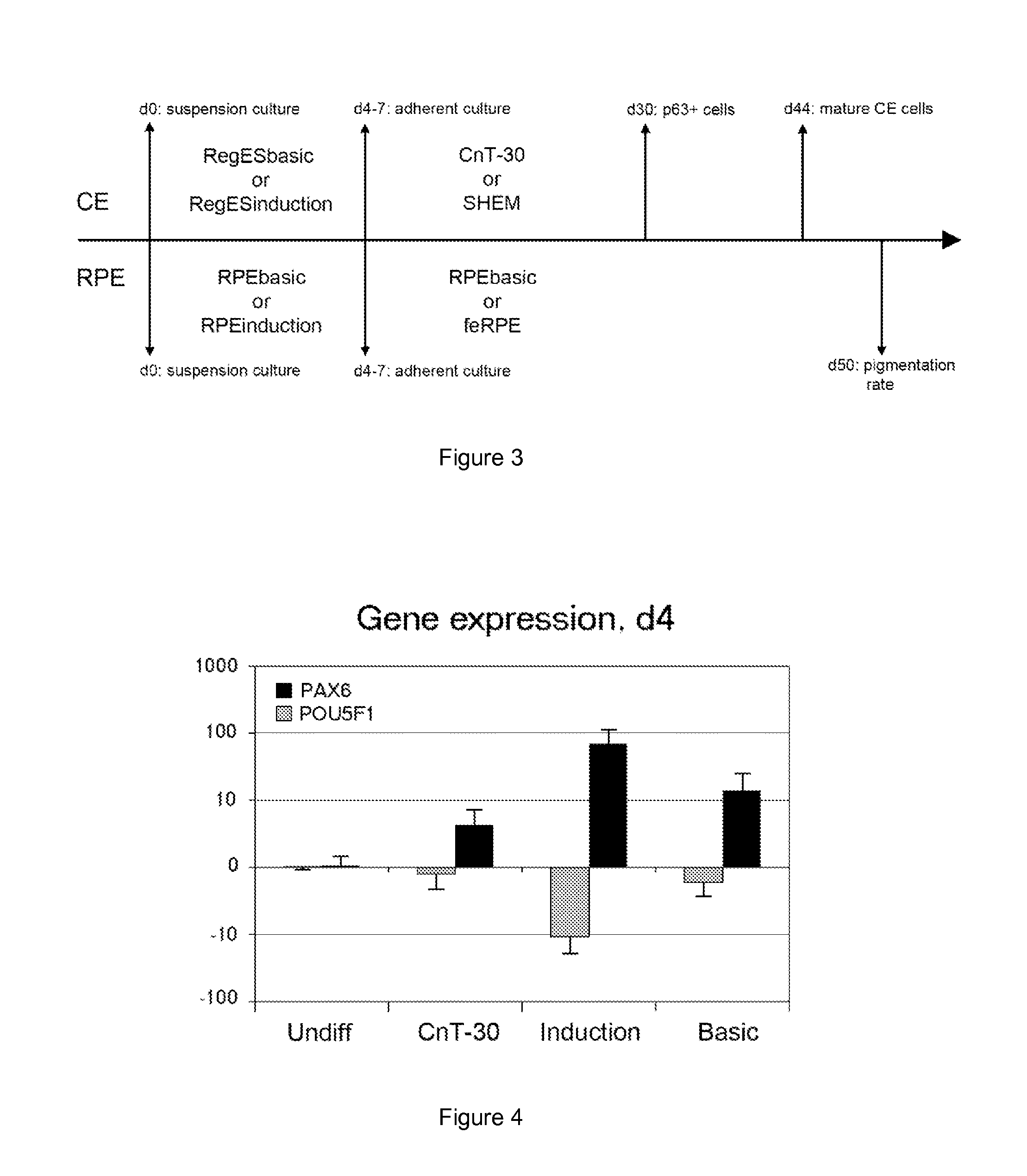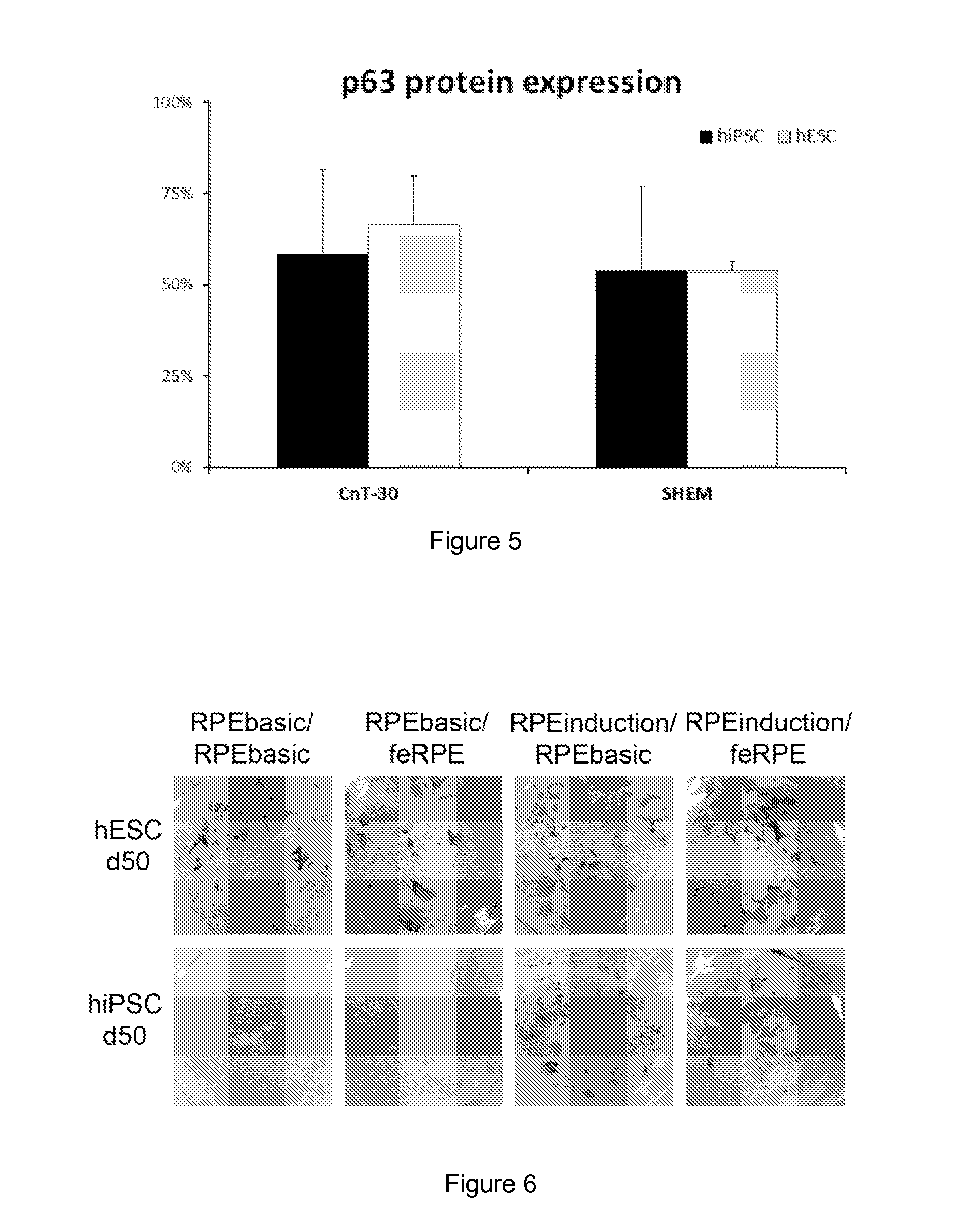Methods and media for differentiating eye cells
a technology of eye cells and media, applied in the field of eye treatment and eye research, can solve problems such as deterioration or total loss of vision, unstable bowman's membrane, and use of a medium which requires donated limbal cells,
- Summary
- Abstract
- Description
- Claims
- Application Information
AI Technical Summary
Benefits of technology
Problems solved by technology
Method used
Image
Examples
Embodiment Construction
[0031]In some aspects, the present invention provides a one-stage induction method for producing eye precursor cells, and a two-stage differentiation method comprising said induction method and a further differentiation and maturation stage for differentiating said eye precursor cells into differentiated eye cells, such as corneal epithelial precursor cells or early pigmented retinal pigment epithelial (RPE) precursor cells, and further into mature corneal epithelial cells or mature RPE cells, respectively. As used herein, the terms “pre-cursor” and “progenitor” may be used interchangeably unless otherwise indicated.
Induction Method and Medium
[0032]The present induction method is aimed at inducing pluripotent stem cells towards surface ectoderm and eye precursor cells by subjecting said stem cells, preferably in a suspension culture, to an induction medium comprising active “induction supplements”, i.e. a TGF-beta inhibitor, a Wnt inhibitor and a fibroblast growth factor. Both said ...
PUM
| Property | Measurement | Unit |
|---|---|---|
| molar mass | aaaaa | aaaaa |
| molar mass | aaaaa | aaaaa |
| time | aaaaa | aaaaa |
Abstract
Description
Claims
Application Information
 Login to View More
Login to View More - R&D
- Intellectual Property
- Life Sciences
- Materials
- Tech Scout
- Unparalleled Data Quality
- Higher Quality Content
- 60% Fewer Hallucinations
Browse by: Latest US Patents, China's latest patents, Technical Efficacy Thesaurus, Application Domain, Technology Topic, Popular Technical Reports.
© 2025 PatSnap. All rights reserved.Legal|Privacy policy|Modern Slavery Act Transparency Statement|Sitemap|About US| Contact US: help@patsnap.com



